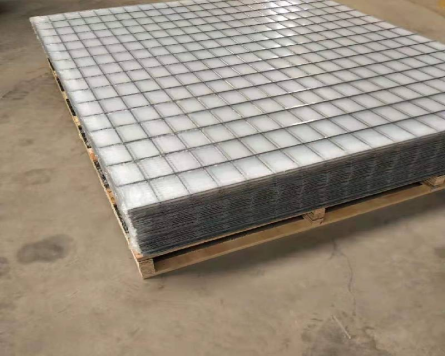
- Cellulare
- +8613931874955
- sales@cntcmetal.com
Sacrificial Formwork Systems for Complex Structures
In the realm of modern construction, creating complex structures with intricate shapes and curves demands innovative formwork solutions. Sacrificial formwork systems, which remain in place after concrete curing instead of being removed, have emerged as a game-changer. Among these, systems like pecaform and pecafil offer unique advantages, especially for projects where traditional formwork would be impractical or costly. Shijiazhuang TangChao Metal Products Co., Ltd., a professional manufacturer of concrete and masonry construction accessories—including galvanized wire, wire mesh, and welded mesh formwork—understands the importance of such systems. Their expertise in welded mesh formwork, a light, easy-to-handle, and durable encapsulated wire permanent formwork system, aligns with the efficiency and cost-effectiveness that sacrificial formwork brings, serving as a viable replacement for traditional timber frameworks.

Key Components of Sacrificial Formwork Systems Like Pecaform
- PecaformPanels: These are prefabricated, lightweight panels designed to mold concrete into complex shapes. Made from materials like fiber-reinforced polymers (FRP) or recycled composites, pecaform panels are resistant to moisture and corrosion, ensuring they hold their shape during concrete pouring and curing. Once the concrete sets, the panels become an integral part of the structure, eliminating the need for removal.
- PecafilReinforcements: Pecafil refers to specialized fibers or mesh used within sacrificial formwork to enhance structural integrity. These fibers are mixed into the formwork material or layered within panels, adding tensile strength to both the formwork and the cured concrete. They help prevent cracking in the formwork during pouring and reinforce the final structure against environmental stressors like vibrations or temperature changes.
- Connector Systems: To assemble sacrificial formworkfor large or irregular structures, connectors like clips, bolts, or interlocking edges are used. These components ensure panels fit together seamlessly, creating a tight seal that prevents concrete leakage. Shijiazhuang TangChao’s experience with wire forming and wall ties contributes to the design of secure, reliable connectors for such systems.
Advantages of Using Pecaform and Pecafil in Complex Structures
- Design Flexibility: Pecaformpanels can be custom-molded to fit curved walls, domes, or irregular geometries, making them ideal for iconic buildings, bridges, or sculptural structures. Unlike rigid traditional formwork, sacrificial formwork adapts to complex designs without compromising structural integrity.
- Time and Labor Savings: Since sacrificial formworkdoesn’t require removal, construction teams save hours of labor that would otherwise be spent stripping and cleaning traditional formwork. This speeds up project timelines, especially for large-scale projects where formwork removal is logistically challenging.
- Durability and Longevity: Materials like pecaformand pecafil are resistant to rot, pests, and weathering, ensuring the formwork remains stable over time. When integrated into the structure, they add an extra layer of protection against external damage, extending the lifespan of the building.
Applications of Sacrificial Formwork in Modern Construction
- Curved Façades and Arches: Sacrificial formworksystems like pecaform excel at creating smooth, continuous curved surfaces. Architects use them for building facades with flowing lines or arched doorways, where traditional timber formwork would require tedious, custom cutting and frequent adjustments.
- Underground Structures: For tunnels, retaining walls, or basement foundations, sacrificial formworkprovides a moisture-resistant barrier. Pecafil reinforcements within the formwork help withstand soil pressure and water infiltration, making the structure more resilient to underground conditions.
- Marine and Coastal Projects: Structures like piers, breakwaters, or coastal retaining walls benefit from sacrificial formwork’s corrosion resistance. Pecaformpanels, combined with pecafil fibers, stand up to saltwater exposure, reducing maintenance needs compared to formwork that would degrade over time.
Comparing Sacrificial Formwork Systems to Traditional Options
|
Formwork Type |
Design Flexibility |
Labor Requirements |
Cost Over Time |
Best For |
|
Sacrificial (Pecaform) |
High (custom shapes) |
Low (no removal) |
Higher upfront, lower long-term |
Complex, irregular structures |
|
Traditional Timber |
Low (rigid) |
High (removal/cleaning) |
Lower upfront, higher maintenance |
Simple, rectangular structures |
|
Welded Mesh Formwork |
Moderate (adaptable) |
Low (permanent) |
Moderate, cost-effective |
In-ground frameworks, retaining walls |
Shijiazhuang TangChao’s welded mesh formwork, a type of permanent formwork, bridges the gap between traditional and sacrificial systems, offering a balance of flexibility and affordability for less complex projects.
Sacrificial Formwork FAQS
Is Pecaform Reusable Like Traditional Formwork?
No, pecaform is designed as sacrificial formwork, meaning it remains part of the structure after concrete curing and is not reused. This is a trade-off for its design flexibility and labor savings, as reusability is not its primary goal.
How Does Pecafil Enhance Sacrificial Formwork Performance?
Pecafil adds tensile strength to both the formwork and the cured concrete. It prevents cracking in pecaform panels during pouring and reinforces the final structure against environmental stress, making the system more durable overall.
Can Sacrificial Formwork Be Used for Load-Bearing Structures?
Yes, when designed correctly with materials like pecaform and pecafil, sacrificial formwork can support heavy loads. The formwork integrates with the concrete, contributing to the structure’s overall strength, making it suitable for load-bearing walls, columns, and bridges.
Is Sacrificial Formwork More Expensive Than Traditional Options?
Sacrificial formwork has higher upfront costs due to custom materials like pecaform. However, it saves money long-term by reducing labor (no removal) and maintenance (durability), making it cost-effective for complex or large-scale projects.
Where Can I Source Quality Components for Sacrificial Formwork?
Manufacturers like Shijiazhuang TangChao Metal Products Co., Ltd. offer related construction accessories, including welded mesh formwork and wire reinforcements, which complement sacrificial formwork systems. Visit their website to explore products that align with pecaform and pecafil applications.
condividere:
-
Creative Ways to Decorate Your Tomato CageNotiziaAug.22,2025
-
Common Mistakes When Installing Brick Wall TiesNotiziaAug.22,2025
-
Customizing Conical Springs for Aerospace ApplicationsNotiziaAug.22,2025
-
Galvanized Tie Wire for Binding PipesNotiziaAug.22,2025
-
Environmental Impact of Using Snake Spacers in PlumbingNotiziaAug.22,2025
-
Wall Ties for Concrete: Invisible Guardians of Building Structural StabilityNotiziaAug.08,2025
-
Timber Frame Wall Ties: Stable Bonds for Load TransmissionNotiziaAug.08,2025



















